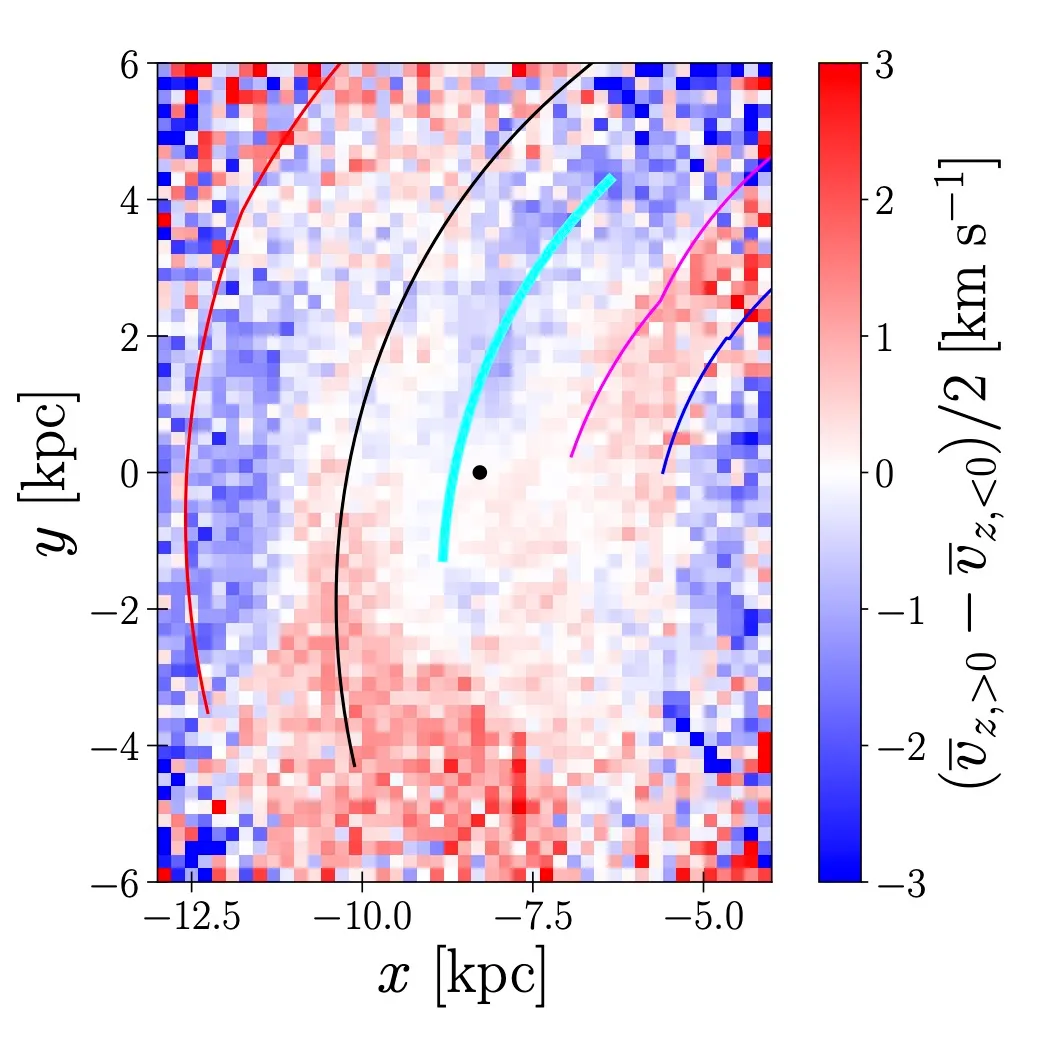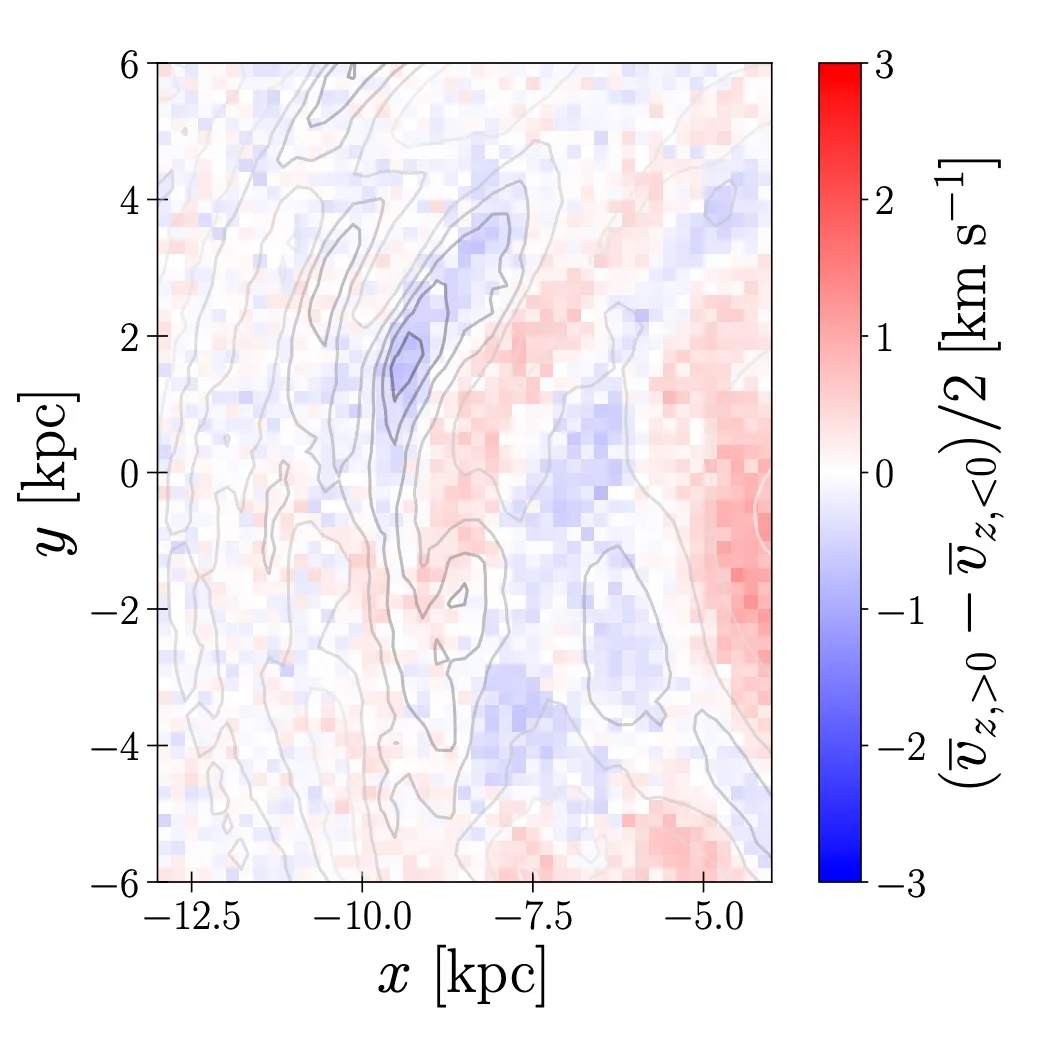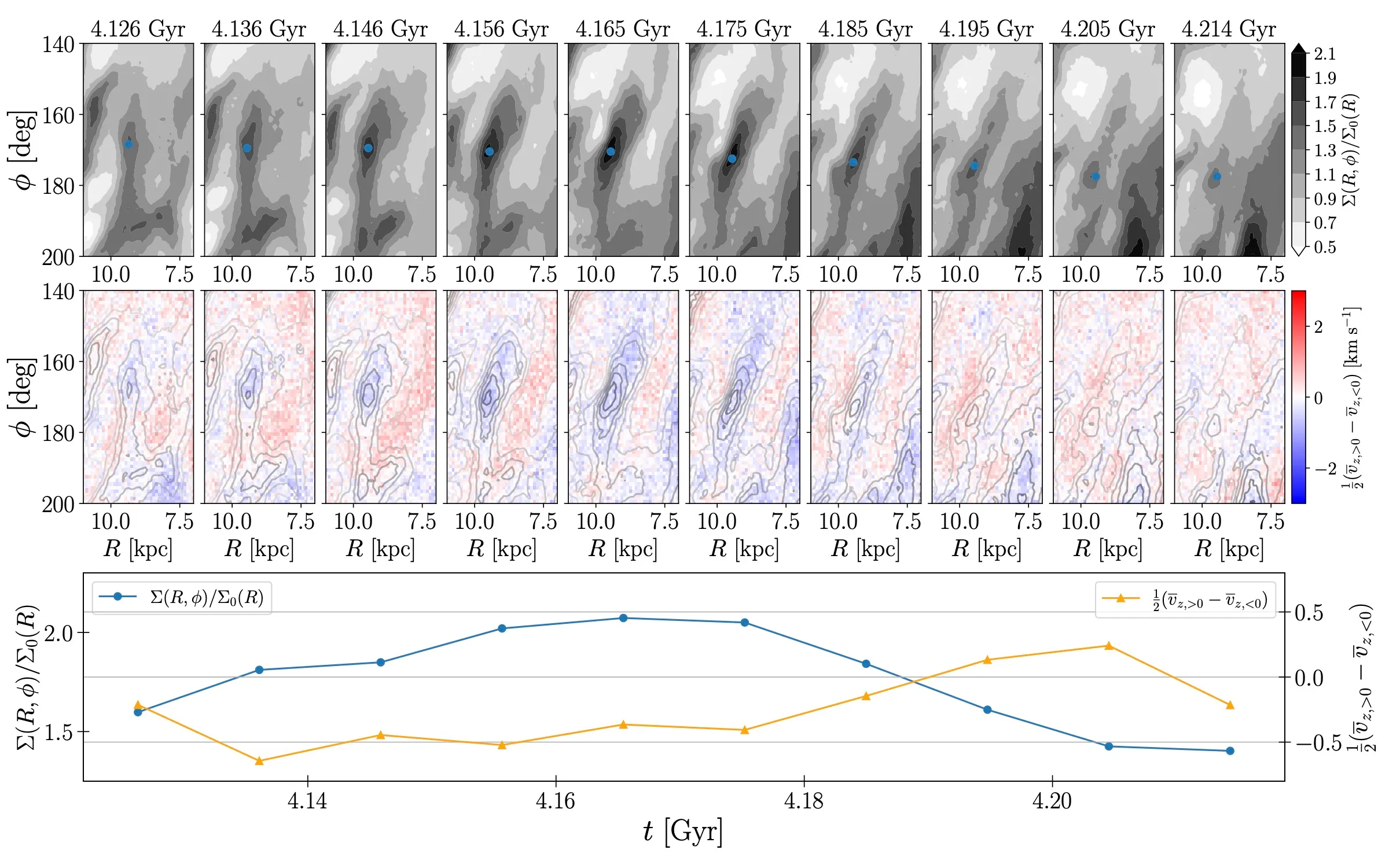Breathing motion and spiral arms
Asano et al. (2024)
Abstract
Theoretical models of spiral arms suggest that the spiral arms provoke a vertical bulk motion in disk stars. By analysing the breathing motion, a coherent antisymmetric vertical motion around the mid-plane of the Milky Way disk, with the Gaia data, we found that a compressing breathing motion presents along the Local arm. On the other hand, with the isolated -body model, we found that the transient and dynamic spiral arms induce compressing breathing motions when the arms are in the growth phase. The observed clear alignment of the compressing breathing motion with the Local arm is similar to what is seen in the growth phase of the simulated spiral arms. Hence, this result suggests that the Local arm’s compressing breathing motion can be explained by the Local arm being in the growth phase of a transient and dynamic spiral arm.
Observational Findings
- The Gaia DR3 data reveals a clear pattern of compressing breathing motion along the Local arm.
- This pattern is more pronounced than previously observed and aligns well with the Local arm position suggested by Reid et al. (2019).
- Weaker associations between the breathing motion and other spiral arms are also observed:
- Expanding breathing motion is present between the Sagittarius-Carina and Scutum-Centaurus arms.
- Expansion partially coincides with the Perseus arm.
- Compression zones exist in the outer Galaxy (12 kpc), potentially associated with the Outer arm, and in the inner Galaxy ( 5 kpc), possibly driven by the bar.


Left: Breathing velocity map from the Gaia data. Solid lines indicate the position of the spiral arms: Outer arm (red), Perseus arm (black), Local arm (cyan), Sagittarius–Carina arm (purple) and Scutum–Centaurus arm (blue). The black dot indicates the position of the Sun. Right: Same as the left panel but for the -body simulation. The contours shows the normalized surface density .
N-body Simulation Results
- The simulation shows a clear correlation between the breathing mode and the spiral arms.
- Compression occurs in the arm regions, while expansion appears in the interarm regions.
- Analysing the time evolution of a simulated spiral arm reveals:
- The compressing breathing motion at the arm region increases as the arm grows.
- The compressing amplitude decreases rapidly during the arm’s disruption phase.

Time evolution of a spiral arm and the associated breathing motion. Top panels shows the normalised surface density in the ten snapshots between Gyr and 4.214 Gyr. The density maps are shown in the frame rotating with the circular frequency at kpc on - plane. The galaxy rotates in the direction in which decreases. Middle panels shows the breathing velocity. The contours of the upper panels are overplotted. Bottom panel shows the normalised surface density and the breathing velocity at the points indicated by blue dots in the top panels as functions of time.
Conclusions
- The study proposes that the Local arm is a strong arm capable of influencing the vertical velocity field of stars.
- The compressing breathing motion observed in the Local arm suggests that it is in a growth phase, resembling the co-rotating dynamic arms seen in the -body simulation.
- The expanding breathing motion associated with the Perseus arm indicates that it is in a disrupting phase.
- This finding is consistent with previous studies on the velocities of classical Cepheids around the Perseus arm.
- The study suggests that the Milky Way may harbour dynamic spiral arms in various evolutionary phases, a phenomenon commonly observed in -body simulations.
